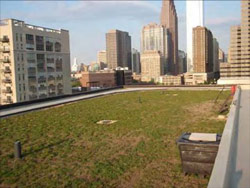
When it comes to development and implementation of stormwater management programs, Pennsylvania’s diverse communities are literally all over the map.
Get Local
 The differences between conditions in and challenges facing pristine watersheds and those in highly urbanized areas are profound -- yet runoff can negatively affect both. Pennsylvania's communities are also tremendously diverse: geographical, socioeconomic, and cultural differences abound.
The differences between conditions in and challenges facing pristine watersheds and those in highly urbanized areas are profound -- yet runoff can negatively affect both. Pennsylvania's communities are also tremendously diverse: geographical, socioeconomic, and cultural differences abound.
Stormwater Management has changed dramatically in the last several years, shifting from a strictly flood control perspective towards a more holistic goal of sustaining our rivers and watersheds. We have moved away from the "build a detention basin" mentality and embraced a variety of green techniques such as maintaining natural landscapes, creating stormwater wetlands, and incorporating pervious pavements, green roofs, and bioretention features in order to retain, filter, and infiltrate precipitation on site.
The goal of the Commonwealth's stormwater management program is to provide very different municipalities with the flexibility to adapt to local conditions, while still encouraging rigorous programs that integrate with others in the larger watershed(s) of which they are a part. As a result, it is municipal level codes and ordinances that provide the mechanisms for meeting the Commonwealth's clean water goals.
Related News from our Blog
Stormwater Ordinances
Shortly after releasing the PA Stormwater BMP Manual in 2006, DEP unveiled a Model Ordinance to act as a guide for municipalities in developing their own local ordinances. The intent was that the new MS4 Permit would require all MS4s to adopt this Model Ordinance or an even more stringent version developed for local conditions.
In some counties where ACT 167 plans have been completed, municipalities have adopted forward thinking ordinances to meet DEP requirements: they are based on approved Act 167 Plans, work in unison with the municipality’s MS4 Permit, subdivision and land development ordinances, and local zoning codes. They include provisions to address peak rate, volume, and water quality.
In far too many cases, however, the notion that a stormwater ordinance will ever be put in place seems rather far-fetched.

